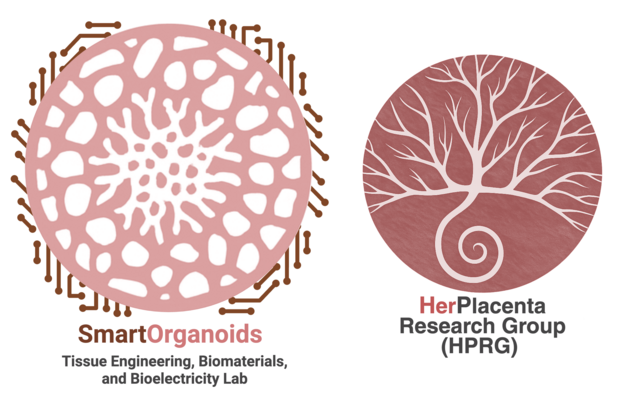
The HerPlacenta Research Group (HPRG) at TU Graz is dedicated to advancing women’s health before, during, and beyond pregnancy – through the development of human-relevant, bioengineered models of the placenta, uterus, and maternal cardiovascular system.
The group is led by Dr. Sahar Ghorbanpour, Principal Investigator of HPRG and Head of the Tissue Engineering, Biomaterials, and Bioelectricity (TEBB) Lab at the Institute of Health Care Engineering, TU Graz. With a multidisciplinary background spanning biotechnology, biomedical engineering, nanotechnology, and translational medicine, her research focuses on developing human-based placental models and diagnostic solutions for pregnancy complications.
She holds a Master’s degree in biotechnology and began her career in the vaccine production industry, gaining experience in biologics and manufacturing processes. She later completed her PhD and postdoctoral research at the University of Technology Sydney, Australia, where she developed microfluidic and bioprinting models of human microvascular networks, the heart, and the placenta to study disease pathogenesis and support drug testing applications. During this time, in collaboration with the Institute for Biomedical Materials and Devices, University of Technology Sydney, she also developed the first low-cost, upconversion nanoparticles (UCNPs)-based point-of-care diagnostic device for early-onset preeclampsia—a platform capable of delivering rapid results in under 15 minutes, particularly valuable in low-resource settings. This innovation was internationally recognized for its clinical relevance and translational potential (APS 2021, USA; SRB and ANZPRA 2022, Australia).
At TU Graz, the group integrates ECM engineering, organ-on-chip systems, and bioreactors (simulating shear stress, oxygen levels, and microgravity) to develop advanced, vascularized 3D organ models for disease modeling, drug testing, and translational research in maternal–fetal medicine.
The HerPlacenta Research Group collaborates closely with public hospitals, clinical researchers, engineers, and biomaterials scientists both nationally and internationally. Dr. Ghorbanpour also supervises students across Bachelor’s, Master’s, and PhD levels, fostering an interdisciplinary environment committed to innovation in women’s health.
Research Focus
- Bioengineering 3D mini-organs (placenta, uterus, heart) to study women's health
- Developing organ-on-a-chip platforms for maternal-fetal research
- Using bioreactors to simulate physiologic conditions: shear force, microgravity, and oxygen concentration
- Designing extracellular matrix environments to support tissue function and disease modeling
- Translating model systems into therapeutic and diagnostic innovations for women’s health
Current Projects
- Biomechanical Characterization of the Human Placenta
Investigating the structural and mechanical properties of human placental tissue to understand its role in supporting fetal development and maternal health.
- Generation of a Tuneable Placenta-Derived ECM
Developing and characterizing customizable extracellular matrix scaffolds derived from human placenta to support tissue-specific 3D cell culture and modeling.
- Development of a Vascularized 3D Mini-Placenta Model
Creating a physiologically relevant, vascularized mini-placenta that mimics maternal–fetal interactions across gestation, enabling the study of preeclampsia and other placental disorders.
- Functional Assessment of the Placental Barrier and Therapeutic Evaluation for Preeclampsia
Using advanced microfluidic and bioreactor systems to assess placental barrier integrity and explore therapeutic strategies to mitigate preeclampsia.
Join Us
Are you passionate about bioengineering, pregnancy research, or reproductive health?
We welcome collaborations, student researchers, and interdisciplinary partnerships. Get in touch with us to be part of this exciting mission to advance women’s health through science and innovation.










